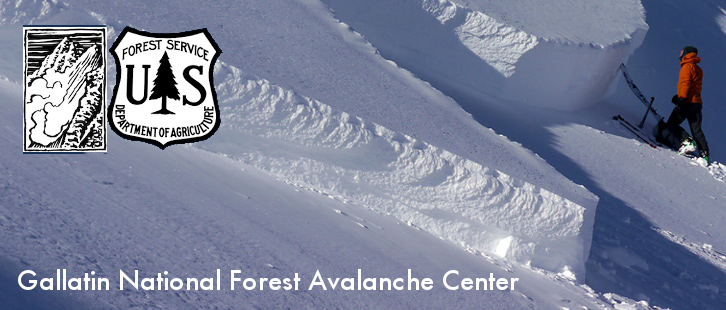Dear Fellow Aficionados of the backcountry:
My career as an avalanche forecaster at the Gallatin National Forest Avalanche Center is coming to a close. After a 29-year run (24 as the director) it’s time to say good-bye. Avalanche forecasting allowed me to mesh two things I value: working in the outdoors and public service.
When I was 17, I skied for the first time on a school trip at Great Gorge/Vernon Valley ski area in NY. I wore a cotton hoody and denim jeans heavily sprayed with Scotch Guard. My lesson was on a bunny slope with a rope tow, surrounded by six-year-olds. I was uncoordinated and not athletic and promptly fell and broke my thumb. "Never again," I thought. Skiing had to be the dumbest sport in the world. Luckily, I was wrong. The arc of my skiing career went from learning to telemark in college with knotted bandanas as poor-man skins, to waiting tables at Big Sky so I could get a ski pass and do lap after lap on a chair lift, slowly improving. I then became the assistant manager of Jimmy B’s bar at Bridger Bowl for two years while I took downhill ski lessons so I could be a ski patroller. I pleaded my case to the ski patrol director who finally relented and gave me a job in 1990. Being the worst skier on patrol meant I could only get better, which I did while still holding onto my unofficial “worst-skier” title. In 1995 the director of the GNFAC, Karl Birkeland, asked if I wanted to fill in as an avalanche forecaster while he went to graduate school. Once my foot was in the door, there was no getting it out, and in 2000, when he moved on, I became the director.
My work at the GNFAC was never a solo endeavor. GNFAC is a team of competent people. I have been fortunate to work with some of the best in the industry who trained and mentored me and patiently stood by as I flailed. And of course, YOU, lovers of winter backcountry were always my audience. Thank you for listening and learning.
When I was hired, the newest technology still required looking at a small black and white computer screen through a magnifying glass and counting isobar lines to predict snow storms. The tools for avalanche forecasting have changed since then, but the reasons people die have not. The inability to identify avalanche terrain, laziness to determine snow stability, poor rescue skills and traveling without someone watching you are all too common themes in accidents. My job has been to warn, inform and teach people to make weighty decisions. Even as a professional, I am not immune to bad decisions and consequences. I have lost close friends in the mountains, while I was graced by luck at critical times. In my 29-year career at the GNFAC, 54 people have died in avalanches in southwest Montana. That’s a big number. I've tried to keep this number down and I wish it was smaller. Each one was a person with dreams, aspirations and family members who loved them. Some I knew personally and a few I dug out with my own hands. It's impossible to know how many were spared because of my work, but they are out there, and knowing that brings me solace.
My seasonal career welded me to Bozeman from October to mid-April for most of my adult life. I am excited for that to change. I want to ski outside Montana, climb in the desert, surf mid-winter and travel. Lots of travel. The work I now do in the summer I hope to enjoy year-round: climbing guide; avalanche consultant in Central Asia; and getting girls to school in northern Pakistan though the non-profit I co-founded--Iqra Fund. My body has been beat up but is still working and I hope to continue making a difference.
Thank you for making my time at the GNFAC meaningful, fulfilling and valued. Keep on supporting the GNFAC.
With deep gratitude and appreciation,
Doug Chabot

